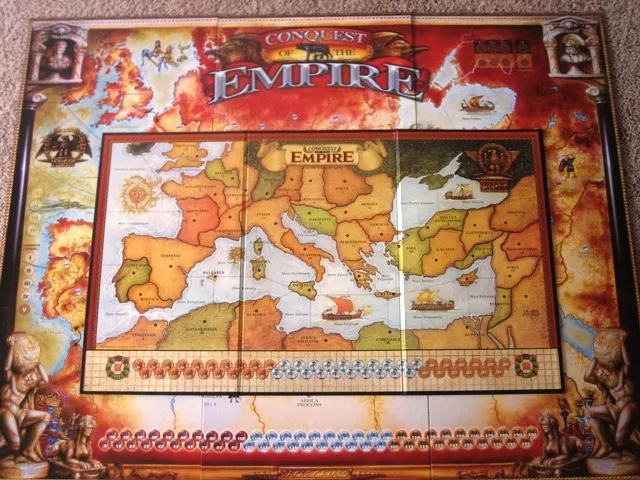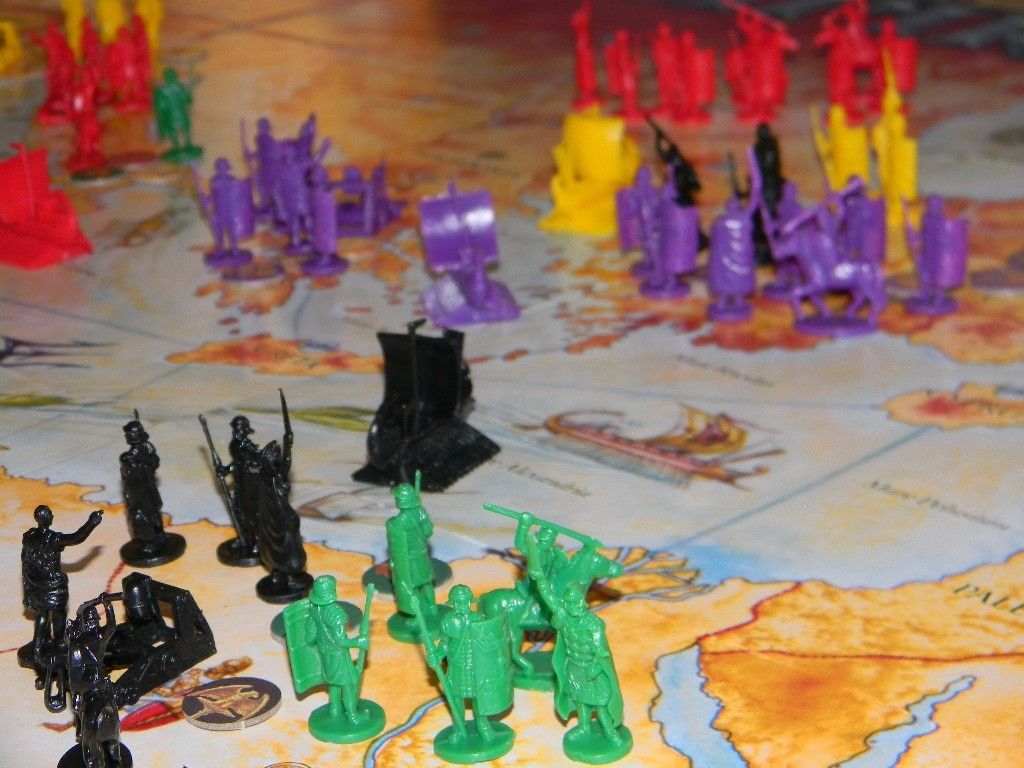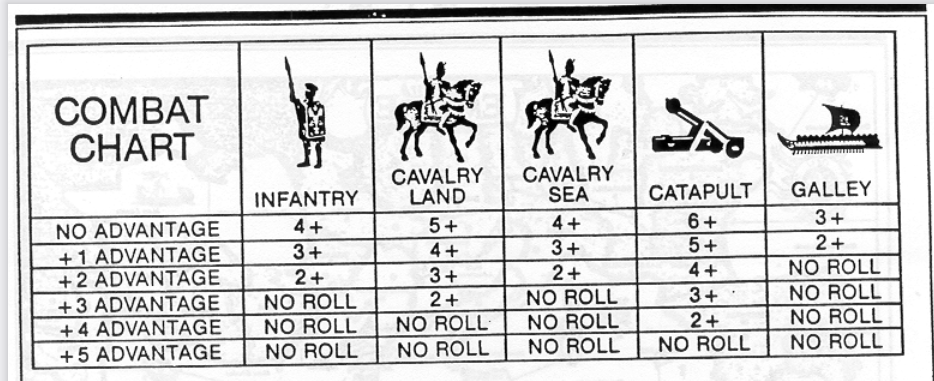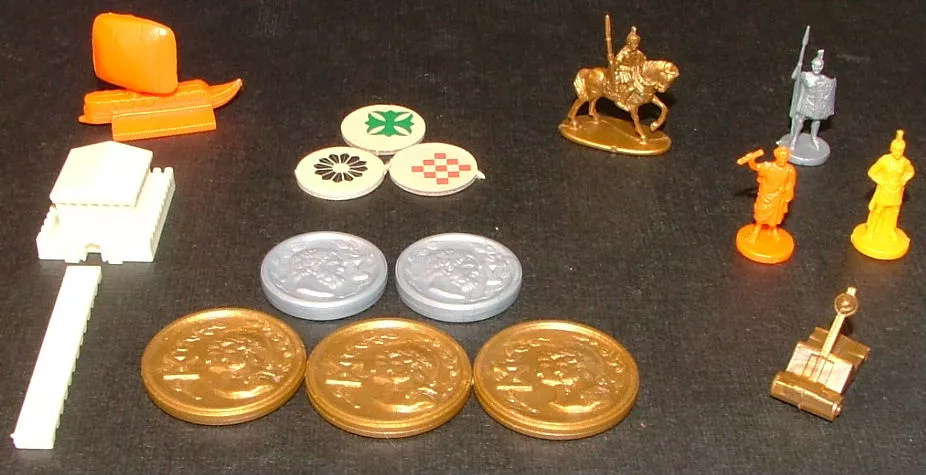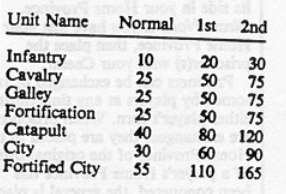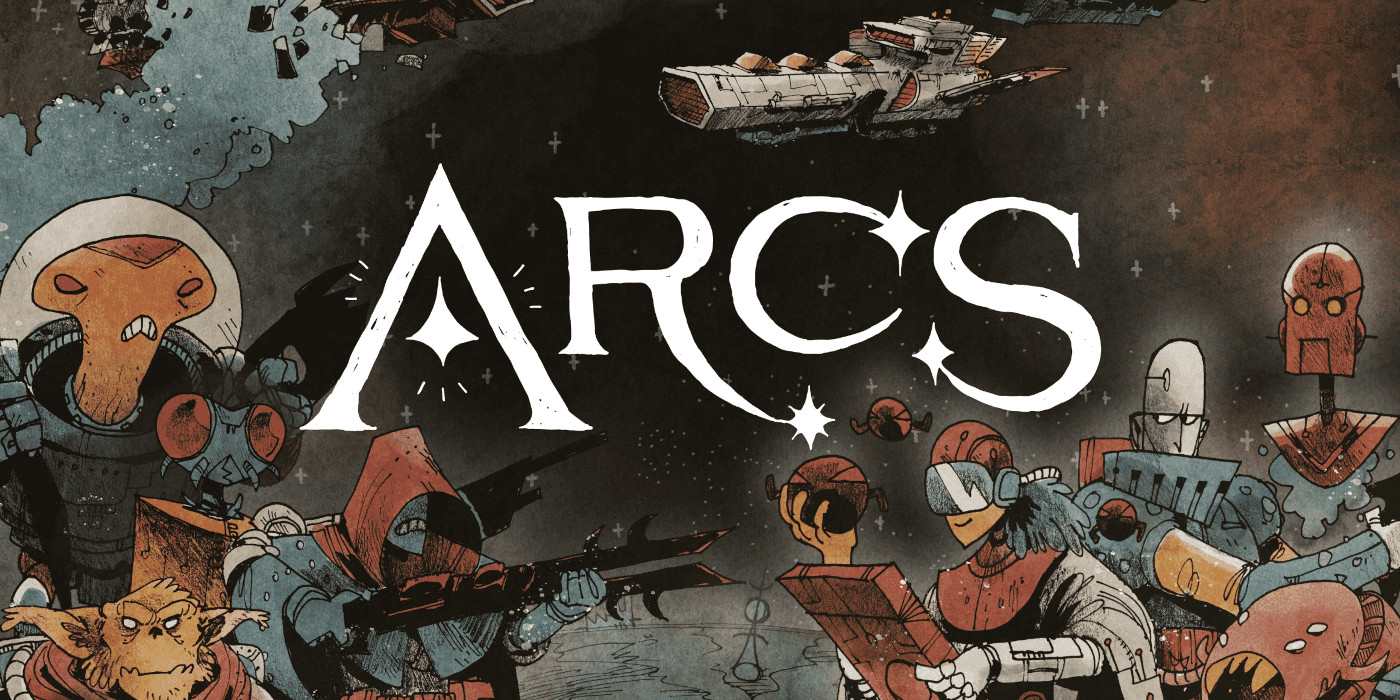‘Conquest of the Empire’ is Like ‘Risk’– But It’s Actually Good
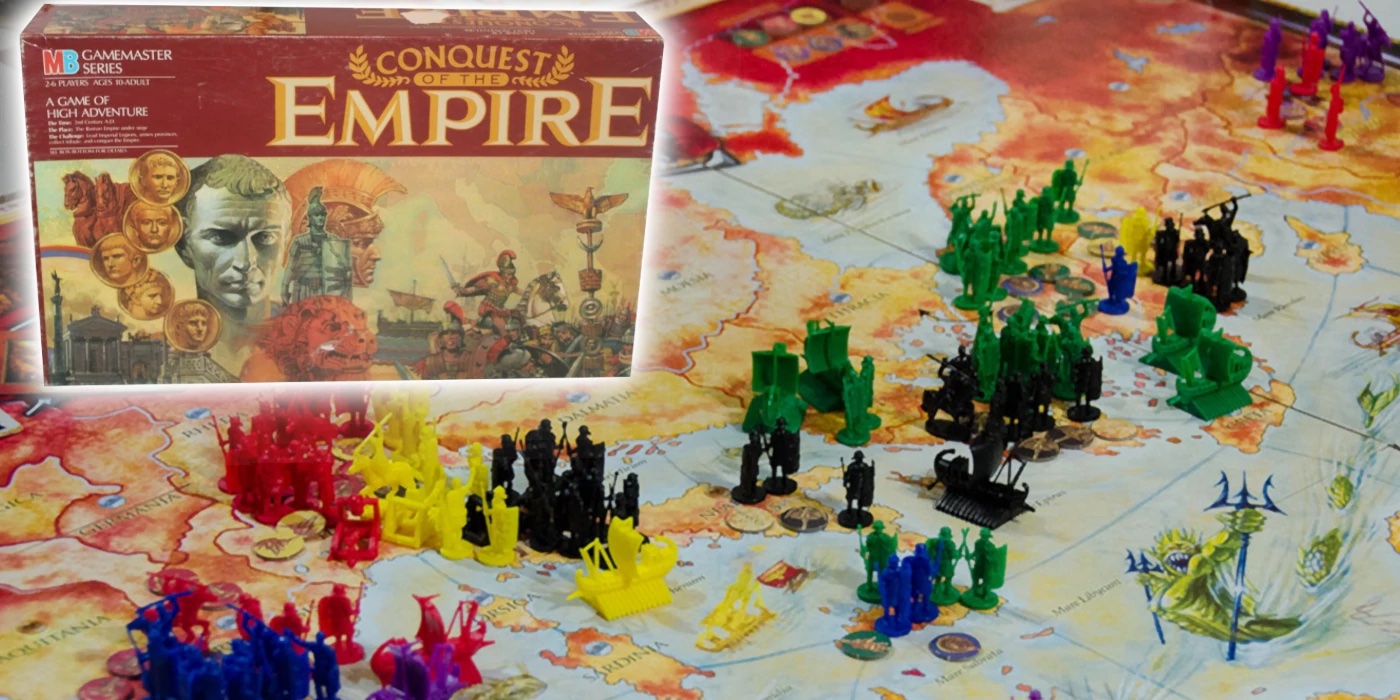
Risk has a lot of room for improvement. The Conquest of the Empire board game improved on it, in every way possible.
It’s hard to know why some games are famous enough to snag a space in every grandparent’s closet, while others only garner cult following status.
Previously, we took a look at Lionheart, which is something of an upgraded version of Chess. Today, we’re continuing the classic games trend by looking at Conquest of the Empire–which is very much an upgraded version of Risk.
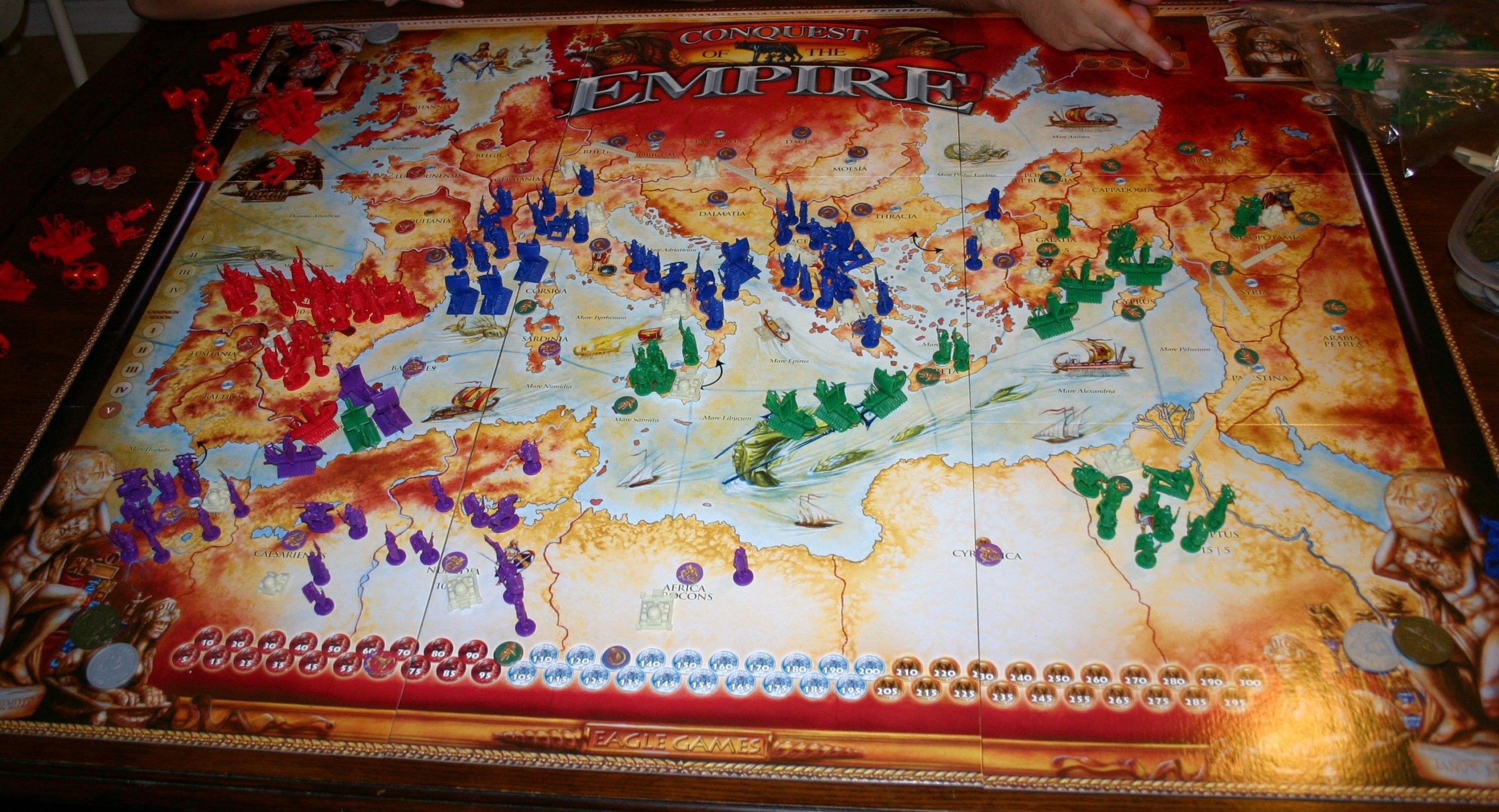
Conquest of the Empire is a competitive, area control, strategic combat game for 2 to 6 players. It’s set near the Mediterranean Sea around 200 BC. The objective of the game is simple–all players are trying to eliminate any other Caesars.
The game was originally released by Milton Bradley in 1984, and then again by Eagle-Gryphon Games in 2005 with some more updated rules. Even though the 2005 version is way more popular, we’ll be looking at the 1984 version, because retro board games are my shtick.
If you know Risk, that will save us a lot of time in explaining Conquest of the Empire. The basic foundation is the same: move your armies, fight their armies, get money to buy more armies, repeat.
But literally every step of that sequence is improved.
Move Your Armies
There are two categories of units in Conquest of the Empire: Leaders and Combat. Leaders can move, but not fight. Combat units can fight, but not move. Therefore, in order move your combat units, you need a leader to form a Legion.
A Legion is a single Leader unit and up to 6 combat units. Legions can move and fight, so your units defending your territory don’t need to be a Legion, but your attacking forces do.
Each player has several Generals as their Leaders, but also a single Caesar. Lose your Caesar, lose the game.
Fight Their Armies
When entering into a battle in Conquest of the Empire, each player selects up to 5 of their combat units in the contested region (+1 if there is a Leader present). These are the only units that will fight in this combat.
Every unit requires a certain value to be rolled to be defeated in combat. However, catapults and fortified cities grant Combat Advantage, which lowers the value required to kill a unit.
Players alternate making an attack on their chosen target.
For example, tactical players may target their opponent’s Catapults early to lower the opponent’s Combat Advantage. This means any retaliation will be weaker. But bold players might attack infantry first, before they have a chance to strike back at all.
Combat continues until one side’s combat units are all destroyed–or the attackers choose to retreat.
The winner has the option to capture your opponent’s General. That player can either eliminate the General, or they can ransom the General back to the owning player for any price they wish.
Get Money to Buy More Armies
Each region grants the controlling player a certain amount of money to buy units, cities, and city walls. You can also buy roads, allowing free movement between regions. All newly-purchased units are placed on your starting province. So, roads become essential to moving your units to the front lines of combat.
But, if you know your Ancient Roman History (I don’t, I just read the section in the game’s rulebook), you know that inflation was rampant at the time. At two separate thresholds of monetary gain-per-turn, inflation triggers. Each time, the price to buy units increases.
Final Thoughts
Conquest of the Empire isn’t about controlling every province–it’s about eliminating every other Caesar. So, no amount of turtling in Australia is going to keep this game dragging on for hours.
Who can say why Risk still has the following that it has? But with games like Conquest of the Empire–which does all the same stuff, but better–I’m happy to be a part of the push to replace older games with better ones.
And so, if you have that weird uncle who breaks out Risk every family gathering, why not pick up a copy of Conquest of the Empire? Who knows? Maybe the next holiday won’t be so grueling.

